|
Yes, Grandpa Addison Dilts was right. He
often asserted that the Diltses were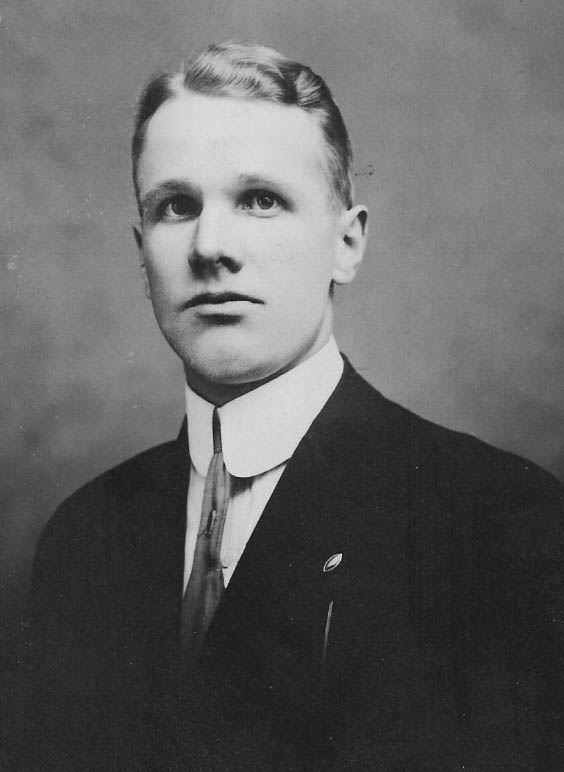 from an old, well-established
early American family, that brothers from Germany immigrated before the
Revolution, and that Diltses married Gustins, who were of
important heritage. Grandpa Addison didn't know the details, but he had a
sense that he was linked to the beginnings of American history and to
families that forged the country. He enjoyed talking about his immediate
ancestors who pioneered and helped settle Madison County, Indiana, in the
first decades of the 19th century. Even as little children we
knew that our Dilts ancestor Richard Dilts followed his brother William to
Chesterfield in Union Township, and that the big brick house
sitting on SR 32 was built by William and was the first inn in the
county. We knew that Richard's wife was Mary Gustin, and we knew where in
the county our ancestors were buried. from an old, well-established
early American family, that brothers from Germany immigrated before the
Revolution, and that Diltses married Gustins, who were of
important heritage. Grandpa Addison didn't know the details, but he had a
sense that he was linked to the beginnings of American history and to
families that forged the country. He enjoyed talking about his immediate
ancestors who pioneered and helped settle Madison County, Indiana, in the
first decades of the 19th century. Even as little children we
knew that our Dilts ancestor Richard Dilts followed his brother William to
Chesterfield in Union Township, and that the big brick house
sitting on SR 32 was built by William and was the first inn in the
county. We knew that Richard's wife was Mary Gustin, and we knew where in
the county our ancestors were buried.
Addison's wife, my Grandmother Nellie, was not without her family pride.
After all, both sides of her family came from Maryland--Frederick
County, to be specific. She had Mains, Kuhns, and Pryors who went
back generations in that part of America. We heard something about
Wolfsville and that there was a book written about the Mains.
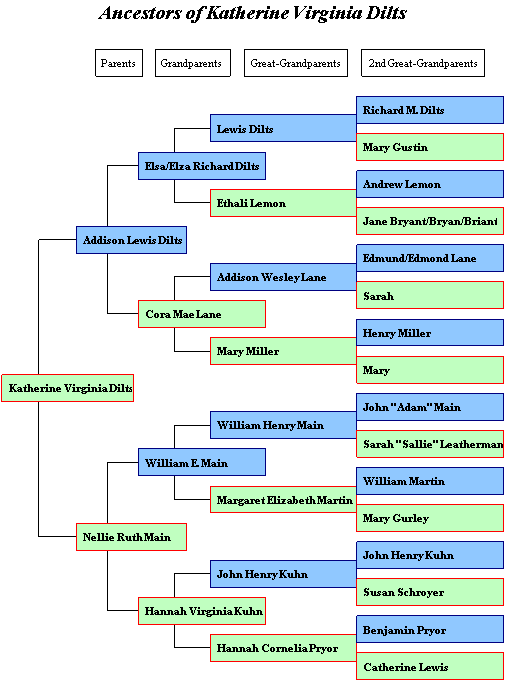
In
the 1970s, Addison and Nellie's daughter, Katherine, my mother,
took up the challenge of discovering more about her family.
This was before the world wide web and internet. All the
genealogical research had to be done the hard way: on foot, by
hand, through mailing and traveling and digging through papers
and records. Mother learned that the Diltses did, indeed, immigrate in
the early 1700s to the colony of New Jersey, that Richard and William's
father was a Francis, who helped settle the Dayton, Montgomery County,
Ohio area, and that brothers Richard and William married Gustin cousins
Mary and Jane, respectively, both from Warren County, Ohio. Mother was
also able to go two more generations back from Mary and Jane Gustin to
their grandparents Jeremiah Gustin and his wife Bethany Fuller.
This was
also about the time that I started dating a high school classmate of mine,
Tom H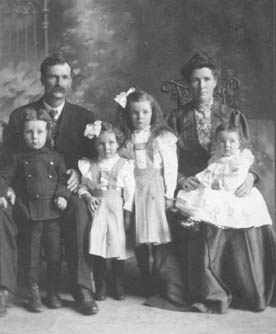 ull. Tom and I had been together in marching band and in various
college preparatory classes. I had just graduated from college and Tom
was finishing his degree. We had shared so many laughs in high school
that dating was just an extension of our friendship. For lack of anything
better to do for fun one day and since Mom was still doing this genealogy
"thing," we decided to go searching through cemeteries for ancestors. We
got some basic information from our parents and went on adventures. Tom's
mother's family were recent immigrants from Ireland--Walshes, Enrights,
McCormicks--who had settled Lincoln, Nebraska, so they were too
distant geographically. However, his Hulls had been in Madison
County for generations, and the Perrins were originally from
Kentucky. Armed with names, dates, and county maps, off we went making
notes and filling in blanks. ull. Tom and I had been together in marching band and in various
college preparatory classes. I had just graduated from college and Tom
was finishing his degree. We had shared so many laughs in high school
that dating was just an extension of our friendship. For lack of anything
better to do for fun one day and since Mom was still doing this genealogy
"thing," we decided to go searching through cemeteries for ancestors. We
got some basic information from our parents and went on adventures. Tom's
mother's family were recent immigrants from Ireland--Walshes, Enrights,
McCormicks--who had settled Lincoln, Nebraska, so they were too
distant geographically. However, his Hulls had been in Madison
County for generations, and the Perrins were originally from
Kentucky. Armed with names, dates, and county maps, off we went making
notes and filling in blanks.

My
father's family, the Summers, were just the opposite, genealogically
speaking, of my mother's. The only thing that had been handed down to
Dad was that his grandfather John Elsworth Summers was from
Winchester, Indiana. Dad had no family history, no names of
great-grandparents, no places, no original origins. In fact, he believed
he was English. The Summers family was a mystery as were the Recks,
the maiden name of his paternal grandmother. Dad's sister Roberta
did maintain that a Summers ancestor once owned the land on which the
city of Dayton, Ohio, now exists and that the grandfather from Winchester had been
disinherited--which would explain the lack of family information.
Dad did have memories of his maternal
grandparents, David and Lilly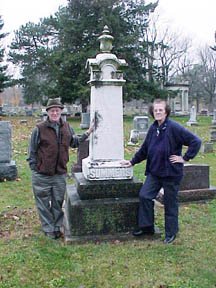 Stevens Decker. Fortunately, several
of their descendents, distant cousins of mine, had written down stories
about that side of his family. While Dad's male line was a mystery, his female side
was well "fleshed-out" and filled with soldiers and all kinds of
interesting "characters," many of whom had been pioneers to Kentucky and
the surrounding areas of our Madison County. Stevens Decker. Fortunately, several
of their descendents, distant cousins of mine, had written down stories
about that side of his family. While Dad's male line was a mystery, his female side
was well "fleshed-out" and filled with soldiers and all kinds of
interesting "characters," many of whom had been pioneers to Kentucky and
the surrounding areas of our Madison County.
Little did Tom and I know that we would use those
notes we took when we were dating for our own family research thirty years
later. By then genealogical information was abundant and easily
accessible on the internet. The research problems that stumped and
confounded my mother would turn into puzzles I could solve while still in
my pajamas and sitting in an easy chair. Therefore, Mary Gustin,
1814-1875, is responsible for my contracting the genealogy "bug" which
runs in my family. Specifically, the problem was which of the three Mary
Gustins born at about the same time in Warren County, Ohio, and all three
first cousins, married our Richard Dilts. Also, my now husband Tom was
trying to solve his own research problem: where did Obadiah Hull
come from and who were his parents? With the help of the internet--via which
we have met many distant cousins who have been so generous with their
research--we both have solved mysteries, had some surprises, added some
stories, tramped through the underbrush seeking grave markers, and
discovered our roots. Our surprises include:
1.
All of our ancestors (with the exception of Tom's Irish mother's family)
go bac k to colonial immigrants, k to colonial immigrants,
2. We have a set of 5th
great-grandparents in common--Jeremiah Gustin and Bethany Fuller,
3. Through Bethany Fuller we both
descend from people who came over on the Mayflower (Grandpa Dilts was,
indeed, correct.),
4. Both the Hull and Summers lines trace
to Revolutionary patriots who lived in the same town, owned land next to
each other, served on the same jury, went to the same church, and are
buried in the same cemetery. (There is even a possibility that the wife
of my ancestor John Summers may have been an Elizabeth Hull.)
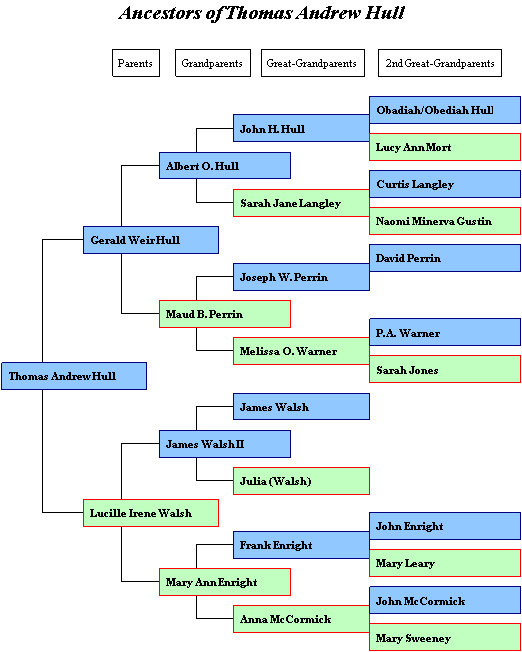
We
Are the Chosen
--by Della M.
Cumming, 1943; edited by Melody Hull
We are the
chosen. In each family there is one who seems called to find the
ancestors, to put flesh on their bones and make them live again, to tell
the family story and to feel that somehow they know and approve.
Doing genealogy is not a cold gathering of facts but, instead, a breathing
of
life into all who have gone before. We are the storytellers of the
tribe. All tribes have one. We have been called, as it were,
by our genes. Those who have gone before cry out to us, "Tell our
story!" So, we do. In finding them, we somehow find ourselves.
How many graves have I stood before...? I have lost count. How
many times have I told the ancestors, "You have a wonderful family; you
would be proud of us." How many times have I walked up to a grave
and felt somehow there was love there for me? I cannot say.
It goes beyond
just documenting facts. It goes to who I am and why I do the things
I do. It goes to seeing a cemetery about to be lost forever to weeds
and indifference and saying, "I can't let this happen." The bones
here are bones of my bone and flesh of my flesh. It goes to doing
something about it.
It goes to pride
in what our ancestors were able to accomplish, how they contributed to
what we are today. It goes to respecting their hardships and losses,
their never giving in or giving up, their resoluteness to go on and build
a life for their family. It goes to a deep pride that the fathers
fought and some died to make and keep us a nation. It is of
equal pride and love that our mothers struggled to give us birth. It
goes to deep and immense understanding that they all were doing it for us,
that we might be born who we are, that we might remember them, and so we
do. Without any of them, we could not exist, and so we love each one
as far back as we can reach. With love and caring and scribing each
fact of their existence, we are they and they are the sum of who we are.
That is what calls those young and old to step up and restore the
memory--or greet those whom we have never known before.
So, as a scribe
called, I tell the story of my family. It is up to that one called
in the next generation to answer the call and take my place in the long
line of family storytellers.
------------------------------------------------------------------------------------------------------------------------------------For those
Viewing the genealogy charts, the
individuals underlined are my family's direct ancestors.
Above pictures top to bottom: Addison Dilts; John
Walsh Family; John Summers and Roberta Summers Ayers at the gravestone of
their great-great grandfather Charles Summers; descendents of Jeremiah
Gustin and Bethany Fuller Gustin: Melody Summers Hull, Tom Hull, and
Katherine Dilts Summers.
Also of note, the watercolors used as the
background or wallpaper for most of these pages are the artwork of my father
John Phillip Summers.
If you are related to
any branch of our extended family, I invite you to e-mail Melody at
<thull@iquest.net> .
|